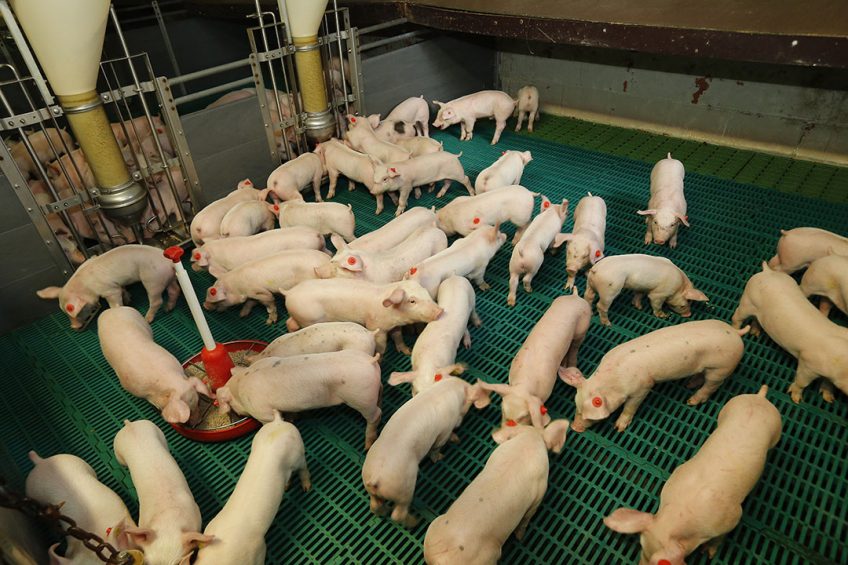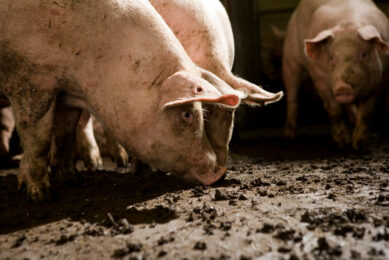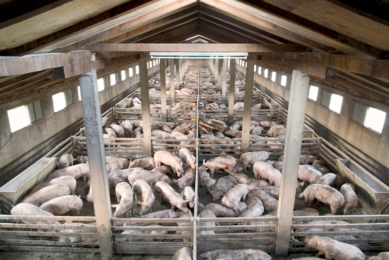Acidifiers: A piece of the AMR puzzle

Countries worldwide have developed new policies to reduce the use of antibiotics in animal production systems, including the prohibition of antibiotics for growth promotion (AGP) purposes. However, a holistic approach, including the use of acidifiers, can bridge the gap to maintain animal health and performance.
The emergence of antimicrobial resistance (AMR) in human and animal populations has been capturing the attention of regulatory bodies as well as the general public. There are studies linking the development of AMR with the increased use of antibiotics in livestock, and both consumer demand and increasing government regulation are fuelling moves to reduce dependence on antibiotics in animal production systems. However, as the industry moves away from over-reliance on antibiotics, there is a need for alternative practices that maintain animal health and performance. Through their ability to control pathogenic micro-organisms, nurture beneficial bacteria and support gut health, acidifiers may be a key part of the solution.
Reducing antibiotics
Young pigs are especially prone to enteric disorders after weaning and, historically, use of antibiotics has been an effective solution to this problem. With removal of antibiotics from weaner pig feeding programmes there are concerns about increased digestive upset, scours, reduced performance and compromised profitability of swine farming operations. In order to successfully remove or reduce antibiotic use, a holistic approach needs to be considered, including greater attention to housing, environment, management, biosecurity, health and nutrition of swine production systems. Nutrition will be a key piece of the solution and, although not a ‘silver bullet’, functional feed additives such as acidifiers will play an important role in successfully raising pigs while the need for antibiotics.
Acidifiers as an alternative to AGPs
Over past decades, acidifiers have been generally accepted and utilised in nursery pig diets. Dietary acidifiers may be fed as organic acids, inorganic acids, salts of acids or specific blends of these compounds.
Commonly used organic acids include formic, acetic, fumaric, lactic, citric and propionic acids, whereas the inorganic acids generally include the use of phosphoric acid. To note, the use of acidifiers for feed sanitation and control of mould growth, such as the application of inorganic acids to certain feed ingredients in storage, should not be confused with the use of acidifiers fed to maintain gut health and assist growth performance.
Acidifiers may be considered as alternatives to antibiotic growth promoters due to their ability to:
- create favourable conditions for growth of beneficial bacteria,
- increase nutrient digestibility,
- reduce pathogenic bacteria,
- prevent diarrhoea and intestinal upset, and
- improve growth performance.
It is thought that acidifiers may influence gastric pH, although the correct dietary factors and overall high inclusion levels (0.5-1.0%) are required to achieve such pH reduction. The overall known or direct mode of action of acidifiers is debated, though it appears that reducing the number of pathogenic bacteria is a key effect.

Antibioic Reduction Special: explores different areas of animal production that can be optimised to better protect animals, which in turn, diminishes the need for preventative or sub-therapeutic medicine.
Reduction of pathogenic bacteria
With the stress of weaning, the balance of the intestinal microflora in nursery pigs may be adversely affected and negatively impact gastro-intestinal function. Due to the young pig’s immature stomach and undeveloped intestinal tract, there may be incomplete digestion of feed resulting in a proliferation of pathogenic bacteria and a subsequent decrease in beneficial bacteria. Acidifiers can remedy these gut conditions. Studies have shown that use of acidifiers may reduce Coliform and E. coli bacteria and create favourable conditions in the intestinal tract for bacteria such as Lactobacilli. How does this occur? The reduction in pathogenic micro-organisms may result from the bactericidal effect of organic acids on such pH sensitive bacteria as Coliforms and Clostridia. Depending on the degree of dissociation, organic acids may impact certain bacteria and disrupt normal physiological mechanisms. According to one study, a non-dissociated organic acid can penetrate the bacterial cell wall and become exposed to the relatively neutral internal pH of the bacteria. It may then dissociate, releasing H+ and its anions (A-). This release of H+ ions will cause a reduction of internal pH and cause pH sensitive bacteria to expend energy to maintain internal homeostatic conditions. This production or consumption of energy results in the bacteria slowing its growth or eventual inhibition of the bacteria leading to cell death.
Improving growth performance
A recent study at Iowa State University, USA, examined the use of an organic acid blend, phytochemical, and permeabilising complex (Biotronic Top3 by Biomin) on nutrient utilisation and growth performance of weaner pigs. The study examined 2 groups (control and treatment) of 8 replicates over a 21-day growth period post-wean.
Results of the study indicated:
- an increased feed intake (+33 g/day),
- improvement in average daily gain (30 g/day) and
- improvement of FCR (-0.05).
Figure 1 – Ileal villi height and crypt depth of nursery pigs fed an acidifier blend.

An overall enhanced gut health may explain the observed performance improvement where pigs fed the acidifier blend showed changes in gut histomorphology with increased (P<0.05) ileal villi height and crypt depth (see>Figure 1). As per Figure 2, enhanced protein utilisation was also observed with improvements (P<0.05) in nitrogen intake, retention and excretion. blood samples were taken for analysis of igf-1 (ng ml) with an overall more efficient nutrient utilisation (122.8 vs 149.1) being noted.>
Figure 2 – Effect of nutrient utilisation by nursery pigs fed an acidifier blend.

Controlling gut pathogens
A key mode of action or benefit of acidifiers is the control of pathogenic bacteria. In weaning pigs, Salmonella typhimurium may cause acute infection in nursery facilities and may even be transferred to pigs destined for slaughter, resulting in carcass contamination. Traditionally, antibiotic treatments have been applied to reduce the probability of such infections. In a recent trial in Italy, a blend of organic acids, phytochemicals, and permeabilising complex (Biotronic Top3) was administered via feed to weaned piglets in a farm infected with Salmonella.
Figure 3 – Salmonella shedding in faeces of weanling pigs fed an acidifier blend.

As illustrated in Figure 3, the percentage and amount of Salmonella positive samples decreased (P<0.05) in pigs fed the acidifier blend. in the study, an improvement in feed intake and average daily gain was also observed. the study indicates that organic acids may inhibit the replication of certain pathogenic bacteria and support additional growth performance.>
The future of pig production
Strategic antibiotic use will still be necessary to treat animals for disease. However, it is clear that in future judicious use and a reduction in the overall amount of antibiotics will be required within livestock systems and the animal feed industry. Implementing a holistic approach will help achieve a feasible solution to this problem. There is strong evidence that strict attention to detail within nutrition and feeding programmes along with provision of key feed additives, such as acidifiers, will be key piece of the puzzle to reducing antibiotic use in swine feeding programmes.











